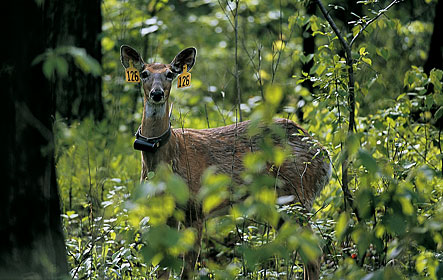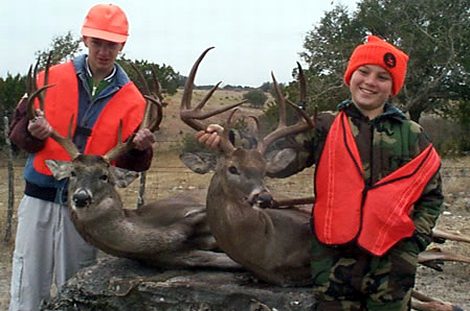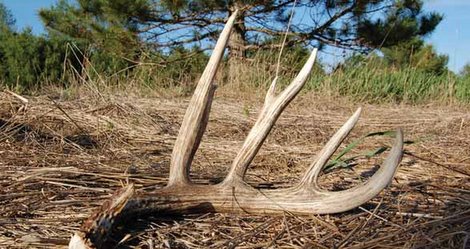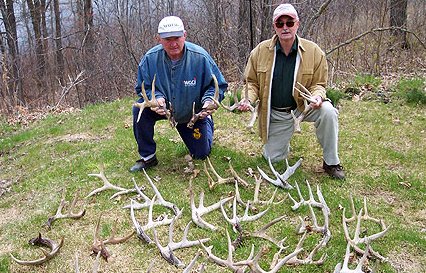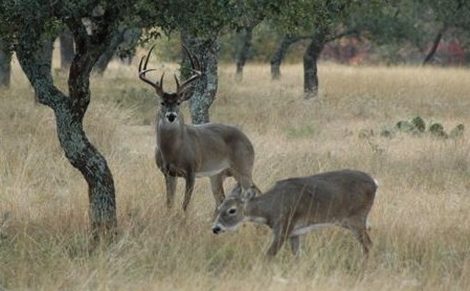Imagine if the Texas Legislature mandated Texas Parks and Wildlife Department write a $250 check to every person whose motor vehicle collides with a deer on a Texas public road.
We’d be talking about a lot of money. And because that money would almost certainly come from the fund holding revenue from sale of hunting and fishing license fees, the inevitable result would be crippling to TPWD’s ability to do fisheries and wildlife management and research. Those programs are almost exclusively funded from license revenue — no general tax revenue goes to Texas’ wildlife and fisheries programs.
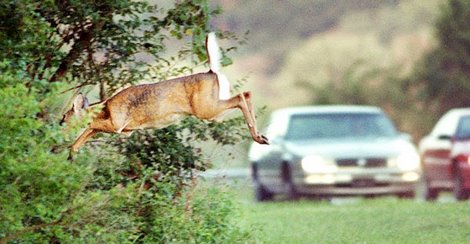
Neither state nor local governments compile figures on how many deer/vehicle collisions occur in Texas. But the insurance industry estimates, based on claims, about 40,000 such accidents in Texas each year.
Between uninsured drivers and insured drivers without comprehensive coverage or opting to not report the accident, the actual number of deer/vehicle collisions in Texas is much higher. Some estimates are that Texas annually sees 100,000 deer/vehicle collisions.
Have to Blame Someone
So let’s be real conservative and say 50,000 deer collisions a year. At $250 per collision, TPWD would be out $12.5 million a year. That’s almost as much as the annual salaries and operating budget for TPWD’s inland fisheries division.
Why should TPWD have to pay money to people who hit a deer? Well, they’re the state’s deer. The state is responsible for them. And TPWD is the state agency charged with managing the deer herd. If one of the state’s deer walks onto a highway, causes an accident and damages a private vehicle, the state should be liable, and, logically, the money should come out of TPWD’s budget.
This is madness, of course. Making the state pay for damages caused by colliding with a deer is like demanding the National Weather Service pay for damage to a car from a freak hailstorm.
Deer are wild animals, and short of exterminating them, the state has no way of preventing a deer or any other wild animal from wandering onto a roadway.
Well, maybe if the state bracketed every road in the state with deer-proof fences. But with cost of building a deer-proof fence running $15,000 or more a mile (that’s $30,000 or more to fence both sides of one mile stretch of highway), no government this side of Qatar can afford, much less justify the expense, to deer-proof even a few miles of road in the most deer-rich areas.
OK, you’re saying, this whole exercise is absurd. What’s the point? Texas has no such law and never will.
Say it Ain’t So
Turns out, some people believe it’s far from absurd. Apparently, a move is afoot to get state legislatures to pass laws making states (and state wildlife and fisheries agencies in particular) financially liable for damages in deer/vehicle collisions.
A couple of weeks ago, a bill was filed in the Missouri General Assembly that, if passed, would force that state’s Department of Conservation (Missouri’s equivalent of TPWD’s wildlife and fisheries divisions) to pay the owner of a vehicle involved in a collision with a deer the first $250 of the cost of repairing the vehicle.
Missouri annually sees at least 9,000 deer/vehicle collisions. So the state’s wildlife agency would be on the hook for about $2.25 million a year, with that money almost certainly coming straight from hunting and fishing license fees.
At first glance, the Missouri proposal might easily be brushed aside as just one of those outrageous pieces of legislation that gets filed because a legislator or an influential constituent has a personal grudge or agenda. Bills like that are filed to make a point, and even their sponsors don’t expect them to pass.
None Yet to Pass
But dig a little deeper, and you find the Missouri bill is not an aberration. A cursory search on the Web turned up four other states — South Dakota, Virginia, Iowa and Indiana — where similar legislation has been filed over the past few years.
The South Dakota bill, which contains language very much like the Missouri proposal, was filed earlier this year, and its fate has yet to be decided. The other bills died a deserved death.
The Indiana bill concerning state liability for deer/vehicle collisions was the most sobering of the lot. That bill, filed in 2002,. would have made the state of Indiana “strictly liable for actual damage to a vehicle and medical expenses caused by the collision of a deer and a vehicle on the highway.”
Conservative estimates put Indiana’s annual deer/vehicle collision at about 11,000. Insurance industry figures say the number is more like 36,000. The average cost of repairs to a vehicle involved in a deer collision, according to the insurance industry, runs about $2,900.
At the low-end estimate of 11,000 deer/vehicle collisions, Indiana would have faced having to pay an estimated $32 million a year just in vehicle repair claims. Indiana officials didn’t even try estimating likely medical costs. The bill didn’t pass.
The moves to try making states pay for damage resulting from drivers plowing into a deer are, if you apply a bit of twisted logic, somewhat understandable in light of today’s someone-has-to-pay mindset.
Accidents are Big Problem
Deer/vehicle collisions are a very real problem. Estimates are that about 1.5 million such collisions happen on U.S. roads each year, resulting in approximately 150 human fatalities. Texas almost annually leads the nation in those fatalities, averaging 15-20 a year.
White-tailed deer populations continue booming. Texas has about 4 million deer, or approximately one deer for every six Texans. And it’s a good bet a very high percentage of the more than 17 million motor vehicles registered in Texas have had close calls with deer and other wildlife.
But blaming the state for those collisions, making the hunting and fishing licence-buying public shoulder the cost while gutting funding for managing natural resources for all residents, is as impractical as it is unfair.
Could Texas ever see an attempt to stick the state with the financial liability of deer/vehicle collisions? Can’t count anything out when the Texas Legislature’s involved.
But considering this is a state where privately owned trucks hauling gravel over public roads are not held liable for the tens of thousands of vehicle windshields they destroy, you’d think Texas legislators wouldn’t even consider trying to stick the state’s hunters and anglers with costs of repairing every car that hits a deer.
Still, it’s obvious someone out there wants to.
____________________
By Shannon Tompkins
Reprinted from the Houston Chronicle
